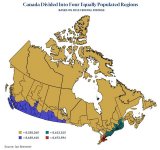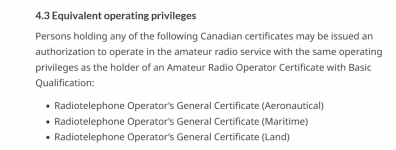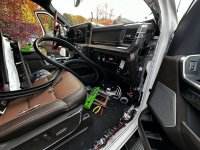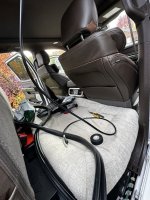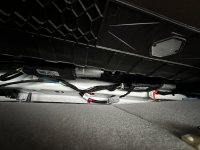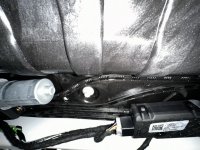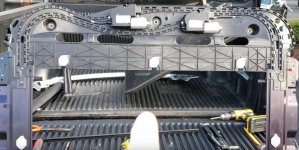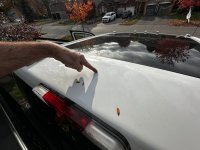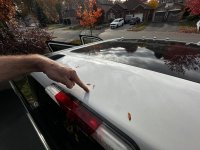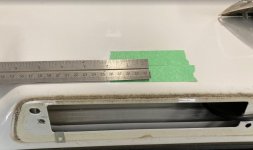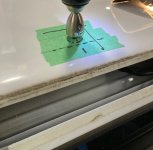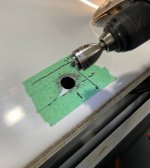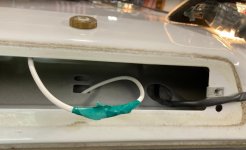1). By report (truck drivers of my acquaintance) the OVERSIZE loads departing Houston for transit to Calgary, LADD is an automatic assumption once across the border. The truck traffic from Anchorage to Seattle and back depends upon it as there are several routes one could use (scheduled service).
2). My son made the 4,000+ mile drive from Ft Worth, TX to Anchorage, AK two years ago using what then was best (PRESIDENT
McKinley + SIRIO 5000) and reported that it really was dead on 11M in his daytime trips (early December). This was a radio rig we installed here using best practice. (KENWOOD KES-5 extension speaker). Had there been radio traffic, he’d have caught it being on main route Montana to Calgary. Next to nothing.
3). I bring up LADD as (again, by report) it
is the useful service to have.
What that entails, etc, is past my remit. Im told its not as prevalent as one works his way east.
4). As this solar propagation cycle has enabled
Skip to be hot & heavy, it’s not been unusual (just unwelcome) that it’s also Canadian interlopers on the travelers channel (AM-19; 27.185) when all not on the road haven’t any business playing DX when so many other channels exist (plus Sideband).
5). Were I a Canadian citizen I’d look closely at the gear required and the licensing needed.
But it’s also an outlaw thing where necessity drives installation & possible use (breakdown; warning of fires; etc). To this end I’d want the requisite gear for an installation (limits of WHAT? to each individual) if my travels took me to the outlying regions.
The sidebar to this is that the halfway point of the drive (above) isn’t in the USA. And that the Alaskan portion is a couple hundred miles.
To call rural Canada “huge” still underplays the vastness.
— Radio service in one’s family Conestoga (should it come to that) needs all bases covered to plan a rooftop antenna farm.
— As to NMO30 vs NMO34 I’ve seen the latter chosen more often.
What I know is that Height = Might (total antenna length
and clearance closest to 14’) so that’d be my guide. A Nano-VNA has a learning curve, but we won’t embarrass an EE it might take him some tries to get a handle on it. (Too many Utube vids that aren’t very good). The LAIRD CWB-27 (obsolete) is the model. Said to occasionally show up on eBay NOS.
Radio is a sport for grown men. Never-ending questions and debates on problem-solving. A great place to put that squirrely energy which might otherwise put us in contention with wives and children. Neighbors & friends.
Linked it earlier, but here is the reference for all installation topics. Most apply to 11M
A Web Site For Mobile Amateur Radio Operators
www.k0bg.com
@mmckenna is a guru
as are some others
(experience & theoretical grasp). The related Install subforum will have discussions relevant to your needs in re
a better plan.
What I have is constant use (2,000-hours @ 12-14-hrs/day at 300-days annually; nationwide) and the difficulties of big truck install.
Is it worth spending to achieve “high performance?” kind of questions. (Yes; pleasure & necessity. And don’t be put off by the yahoos on-air, a HP rig drives right thru them based on clarity TX & DX).
Given your experience-depth elsewhere, consider that some documentation of your pickup installation is a help to others.
What drives me as models are hard to find.
A). Systems dominate (components are plug-in’s)
B). Best Practice (k0bg plus RR).
C). Some quantification (Smith Chart).
To me, these are the master headings.
Experience is that the great clarity today available (since 2023 w/NRC radios) is a revolution
generally. Most folks are trapped in a major metro region and this isn’t as obvious as when far rural.
The pointed example is a headlong rush at an accident still-occurring (pile-up) which
will change one’s life irrevocably.
A mile or two of warning isn’t sufficient to avoid that entanglement.
As a driver we listen for key words and phrases. But “just info” isn’t sufficient when compared to
how something is spoken. “Context” can be everything.
Best 11M Radio Rig
today isn't at all like what 1989 delivered. It’s on another plateau altogether when we are alerted and straining to hear everything possible.
.

